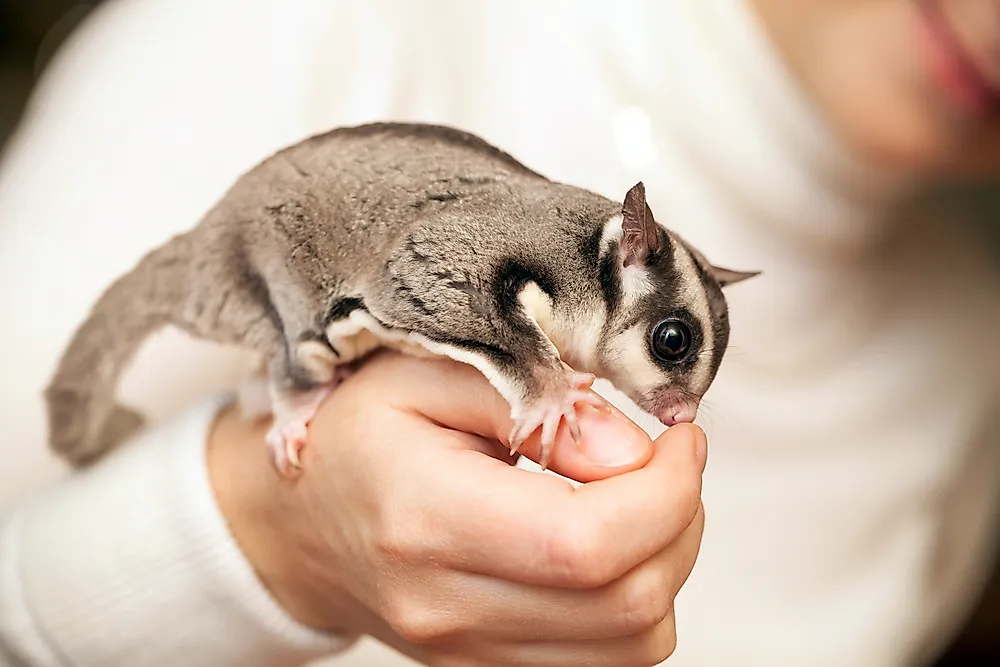


When finishing the glide, they use their sharp claws to cling onto nearby branches. Sugar gliders are able to glide up to 45 meters at a time.Meanwhile, the tail helps them manage the flight, acting as a rudder.

When flying, the animal is able to control and change the size and shape of the membrane by changing the position of its limbs. When moving between trees, this animal uses its gliding membrane, found between its wrists and ankles.
#Suger glider full#
If the attempt was unsuccessful, the animal will take drastic measures, striking the opponent with full force.
When a Sugar glider is angry, it will warn the opponent by leaning back and emitting a chattering sound, which is quite similar to that, produced by a small, yapping dog. Given that the West Papuan gliders have been tentatively classified as Krefft's gliders (albeit to be changed in the future), this indicates that at least the captive gliders kept in the United States are Krefft's gliders, not sugar gliders. However, they are not allowed to be kept as pets in Western Australia, New South Wales, the Australian Capital Territory, Queensland or Tasmania.ĭNA analysis indicates that "the USA (sugar) glider population originates from West Papua, Indonesia with no illegal harvesting from other native areas such as Papua New Guinea or Australia". In Australia, sugar gliders can be kept in Victoria, South Australia, and the Northern Territory. In Australia, there is opposition to keeping native animals as pets from Australia's largest wildlife rehabilitation organisation (WIRES), and concerns from Australian wildlife conservation organisations regarding animal welfare risks including neglect, cruelty and abandonment. In several countries, the sugar glider (or what was formerly considered to be the sugar glider) is popular as an exotic pet, and is sometimes referred to as a pocket pet. If such cases do occur, intruders are usually violently attacked by the group members. Outsiders, which do not belong to the group, are identified due to not sharing the group scent. Individuals within the group recognize each other by group scent. The dominant male also scent-marks and fiercely defends the territory against intruders. In order to identify members of its group, he uses a communication system of scent-marking. Each group of Sugar gliders has a dominant male, which is the leader of the group. Group members do not fight each other, but are known to display threatening behavior. In order to keep warm and conserve heat in cold weather, these animals may huddle together or, occasionally, enter short periods of torpor. They are highly social and active animals, forming groups, which typically consist of 7 or more adult individuals and their offspring. They transfer materials to these nests, coiled in their tails. These nocturnal animals spend their daytime hours in hollows, which are lined with leaves. Members of Petaurus are popular exotic pets and are frequently also referred to as "sugar gliders", but these are now thought to likely represent another species from West Papua, tentatively classified in Krefft's glider ( P. The sugar glider is native to a small portion of southeastern Australia, in the regions of southern Queensland and most of New South Wales east of the Great Dividing Range. The animal is covered in soft, pale grey to light brown fur which is countershaded, being lighter in colour on its underside. Gliding serves as an efficient means of reaching food and evading predators. The sugar glider is characterised by its pair of gliding membranes, known as patagia, which extend from its forelegs to its hindlegs. The scientific name, Petaurus breviceps, translates from Latin as "short-headed rope-dancer", a reference to their canopy acrobatics. They have very similar habits and appearance to the flying squirrel, despite not being closely related-an example of convergent evolution. The common name refers to its predilection for sugary foods such as sap and nectar and its ability to glide through the air, much like a flying squirrel. The sugar glider ( Petaurus breviceps ) is a small, omnivorous, arboreal, and nocturnal gliding possum belonging to the marsupial infraclass.







 0 kommentar(er)
0 kommentar(er)
